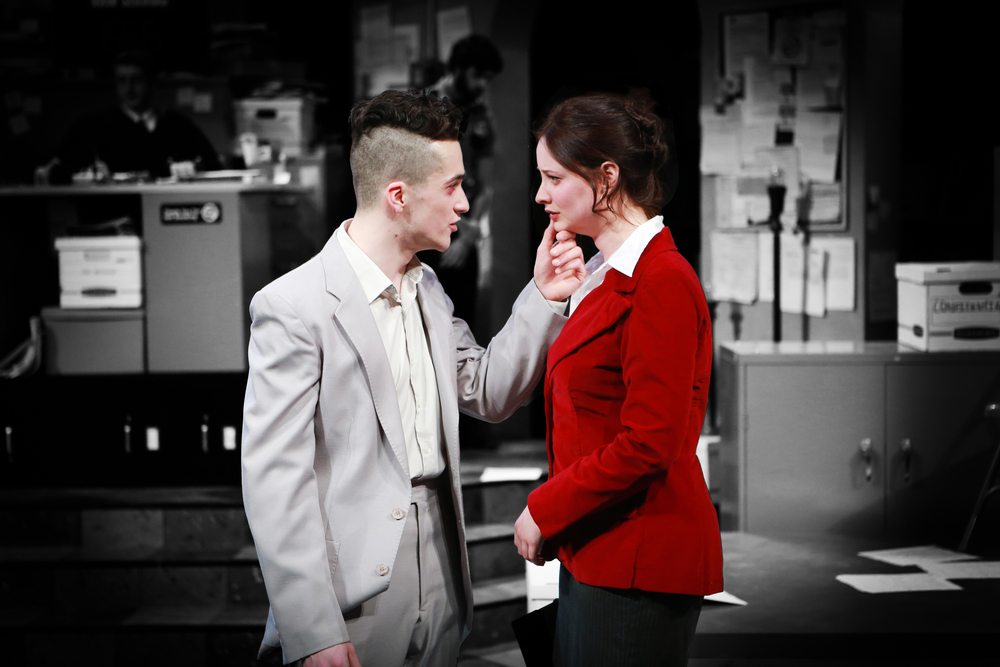
Shea Leavis ’17 as Satan and Julia Friedland ’18 as Fabiana Aziza Cunningham in The Last Days of Judas Iscariot. Photo: Sue Kessler, Gabe Cohn ’16
An Inside Look at the Design Team Behind “The Last Days of Judas Iscariot”
BY: Kallan Dana ’19
The less you think about theater design in performance, the better the designers have done their jobs. Such is the nature of theatrical design work, which strives to enhance the characters, story, and mood of a show. When light, costumes, sound, and set meld cohesively, an audience finds itself unconsciously enthralled—often never recognizing the subtle design forces that craft a production’s overall feel. I talked to Lighting Designer Jared Klein, Sound Designer Max Helburn ’18, Scenic Designer Mackenzie Whiting ’16, and Costume Designer Alyssa Opishinksi about their process in bringing the world of The Last Days of Judas Iscariot to life, and how they all worked together to transform the JKB Black Box into a modern purgatory.
While Judas features a wildly varied cast of characters and an absurd, darkly comedic script, its action takes place almost entirely within a modern representation of purgatory. The design team has worked to evoke a feeling of stagnation that the audience will be able to relate to, naturally landing on the most boring, miserable real-world place that they could think of for inspiration: the DMV.
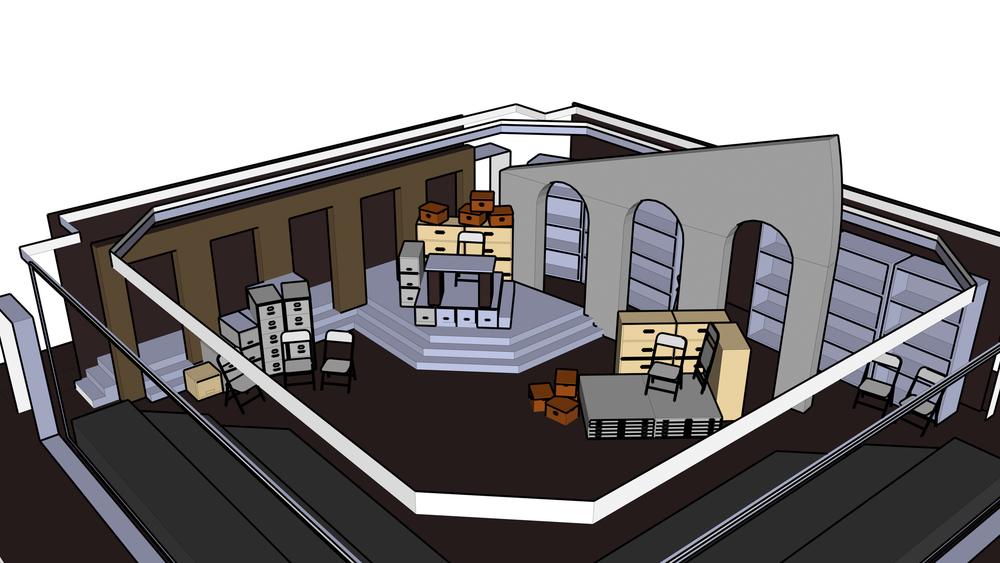
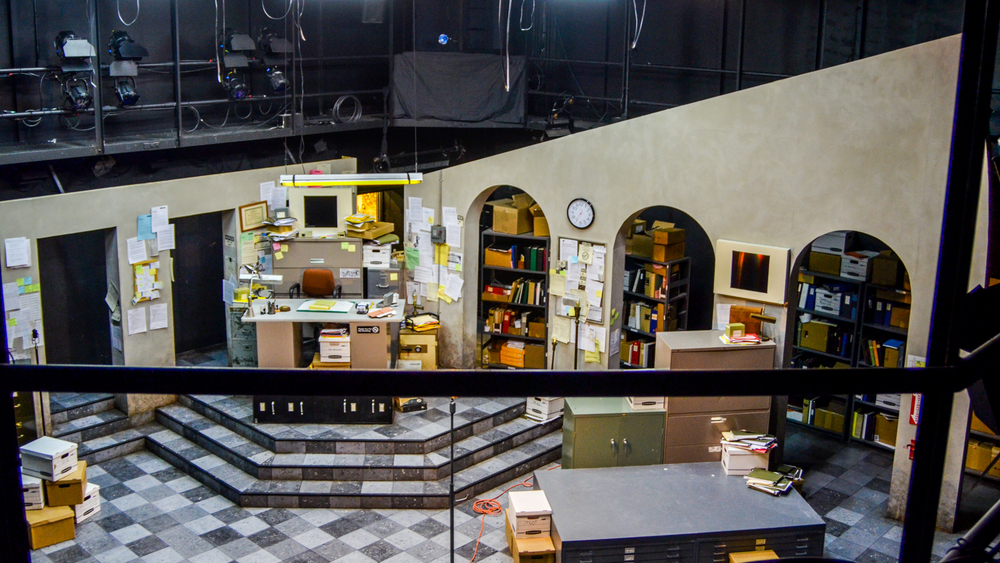
The drab and grating setting of a DMV may seem odd for a comedic show, a fact that Klein acknowledges: “This is a pretty dark comedy, any standard rules about comedies don’t necessarily apply to the design choices for this show.” The design team often made deliberate efforts to restrain themselves. Against his own artistic sensibilities, Klein centered his design on sterile florescent lights, which make for a dreary visual experience. Actively working against his own desire for beauty was a challenge for Klein. “I will sit there and struggle to not make things look good” he says. In committing fully to the design team’s concept, Klein has withheld much from his own typical lighting style.
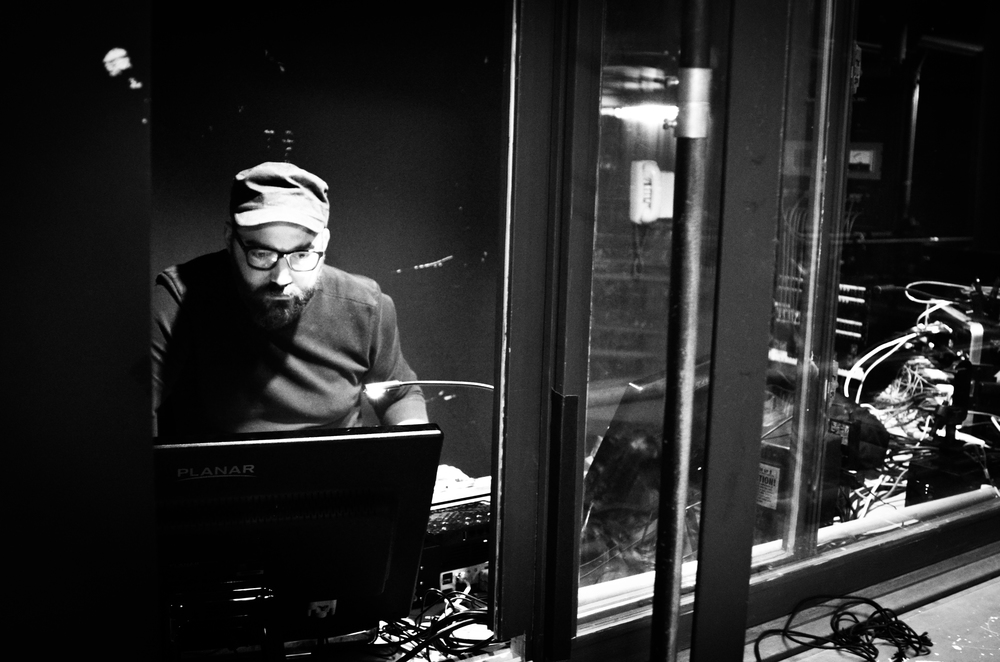
Lighting Designer Jared Klein in the JKB Black Box’s lighting booth. Photo: Gabe Cohn ’16
He was not the only one who had to adjust. Sound Designer Max Helburn ’18, whose past experience with sound design has been mostly with dramatic plays, had his own challenges: “Comedy is definitely not something I’m really used to. I haven’t done as many designs for comedy as I have for tragedy.” With that said, Helburn found his background in drama useful, “Certainly it’s helpful to use sound at dramatic points in the play. Sound is an important component of telling the story—it heightens emotion. But a lot of the time it’s also just used to make the world of the play feel more real.”
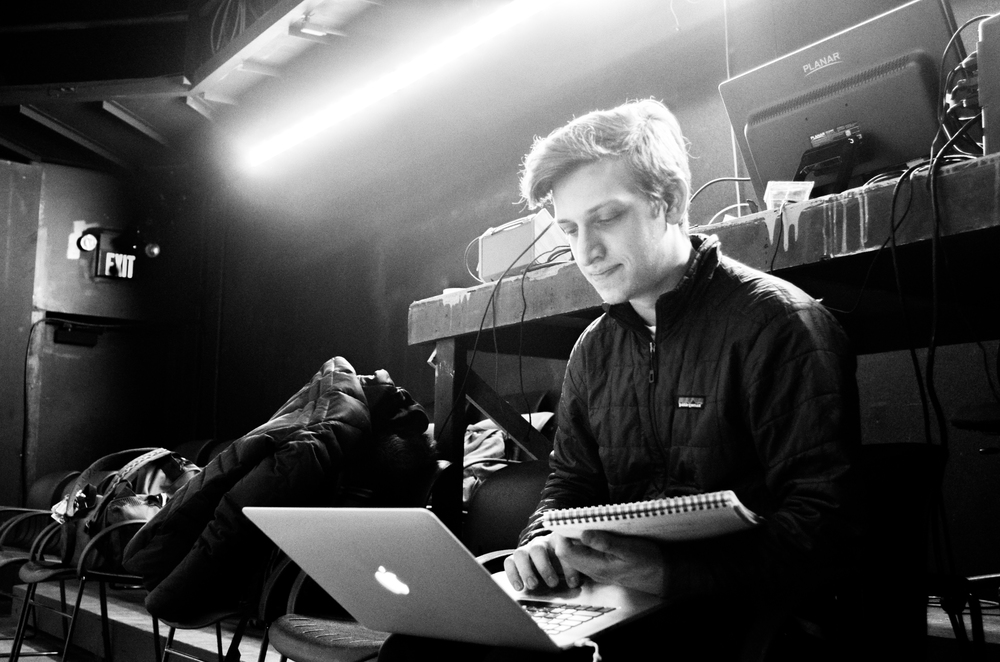
Sound Designer Max Helburn ’18 prepares for a run of Judas. Photo: Gabe Cohn ’16
All of these dull atmospheric elements help build not only a narrative mood, but induce a certain feeling within the audience, something which scenic designer Mackenzie Whiting ’16 was well aware of and strove to push at in her scenic concepts. Whiting stated that her intention was “to create an environmental piece where the audience occupied the same space as the actors,” so that the audience would be wholly immersed in the design team’s modern purgatory. At the same time, in making this scenic choice, Whiting, like her colleagues, continued to strive for a certain level of restraint. She recognized that “You can’t control how the audience thinks, but you can give them something to think about.” She suggests that giving the audience more agency may inspire them to feel “accountable or responsible” for the action they witness taking place.
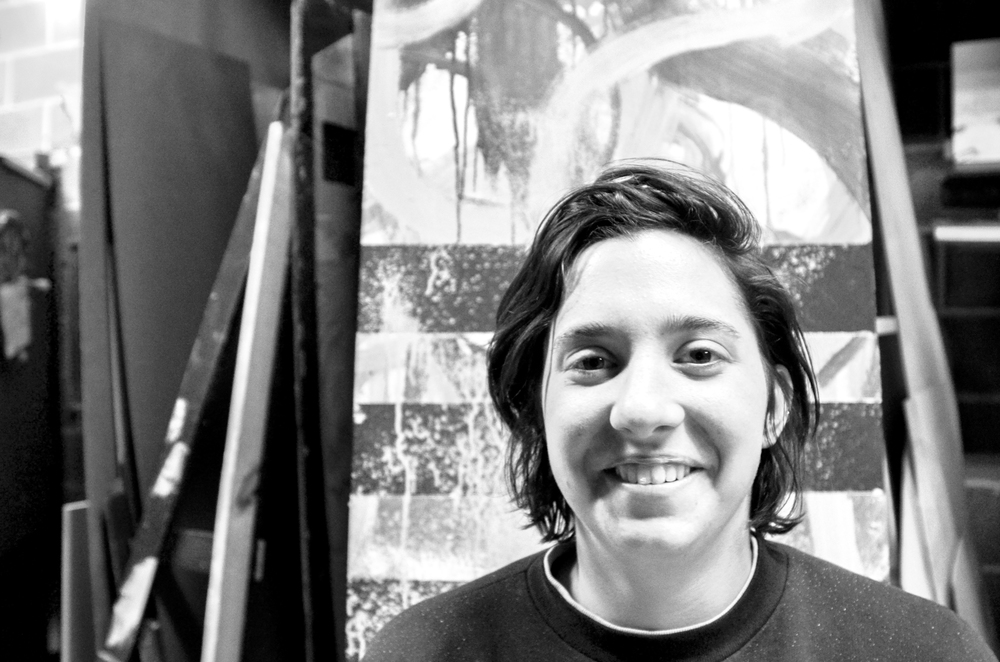
Scenic Designer Mackenzie Whiting ’16 in the JKB scene shop. Photo: Aaron Ardisson ’16
If set, sound, and lighting are united aesthetically to create the show’s immersive, stagnant location, costuming is more involved in the production’s character development. To visually represent the diverse range of characters, costume designer Alyssa Opishinski has worked to develop concepts that are culturally appropriate and authentic. For Opishinski, maintaining a level of accuracy has always been an important tenet of her design work. “If you start choosing elements you like and leave out other things, you really risk cultural misappropriation,” she explains, “you don’t typically want to make a farce out of another culture.” This set of values held true when designing iconic characters, like Jesus. Opishinski made conscious efforts to represent how Jesus may have truly looked and dressed.
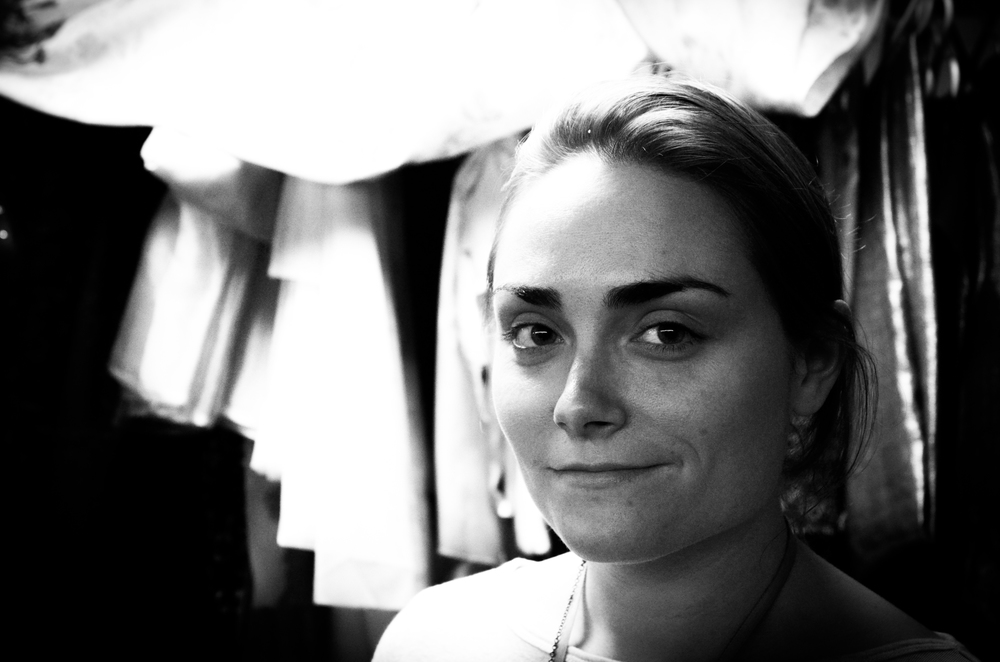
Costume Designer Alyssa Opishinski in the JKB costume shop. Photo: Aaron Ardisson ’16
When working with the directors, Opishinski had to figure out if the characters would be in modern dress, or if each individual’s dress would instead reflect how they would have been dressed when they died. Ultimately, “the directors decided that everyone had already moved on from the time period in which they died, so with some exceptions, everyone is in some variation of modern clothing,” commented Opishinski.
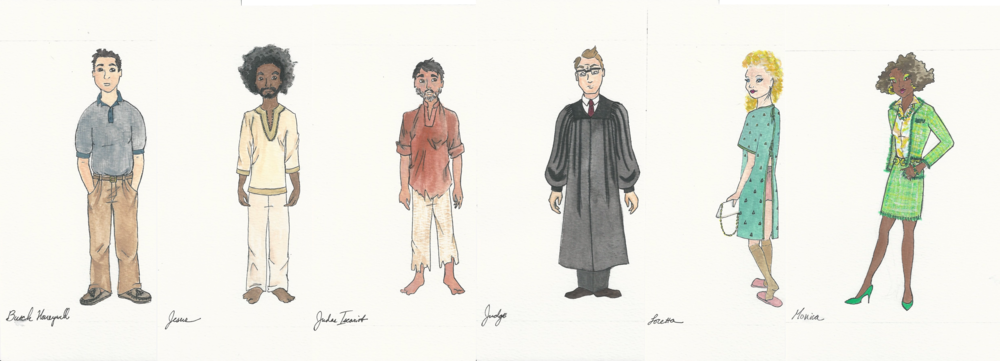
Costume Designer Alyssa Opishinski’s Original Costume Renderings for The Last Days of Judas Iscariot.
The beauty of this art is in its unconscious effect. Helburn quoted a favorite maxim of his, that “Good sound design is sound design that goes unnoticed,” and this statement can often be applied to all kinds of theatrical art. Helburn, Klein, Whiting, and Opishinski’s design work for The Last Days of Judas Iscariot is layered, significant, and astoundingly rich, but its impact is subtle—like the creeping tension and feeling of responsibility the audience gets as they sit under grating florescent lights, slowly becoming the purgatorial jury in the trial of Judas Iscariot.
The Last Days of Judas Iscariot performs in the JKB Black Box from March 3rd through March 9th. Tickets are available online here: http://tinyurl.com/j5fua8m
***
